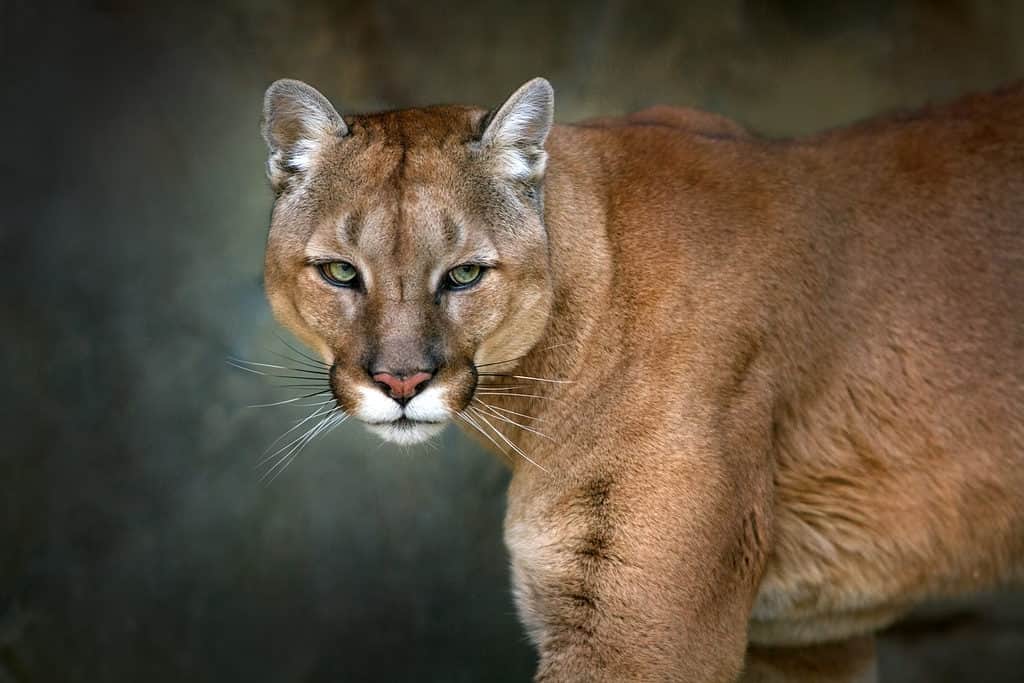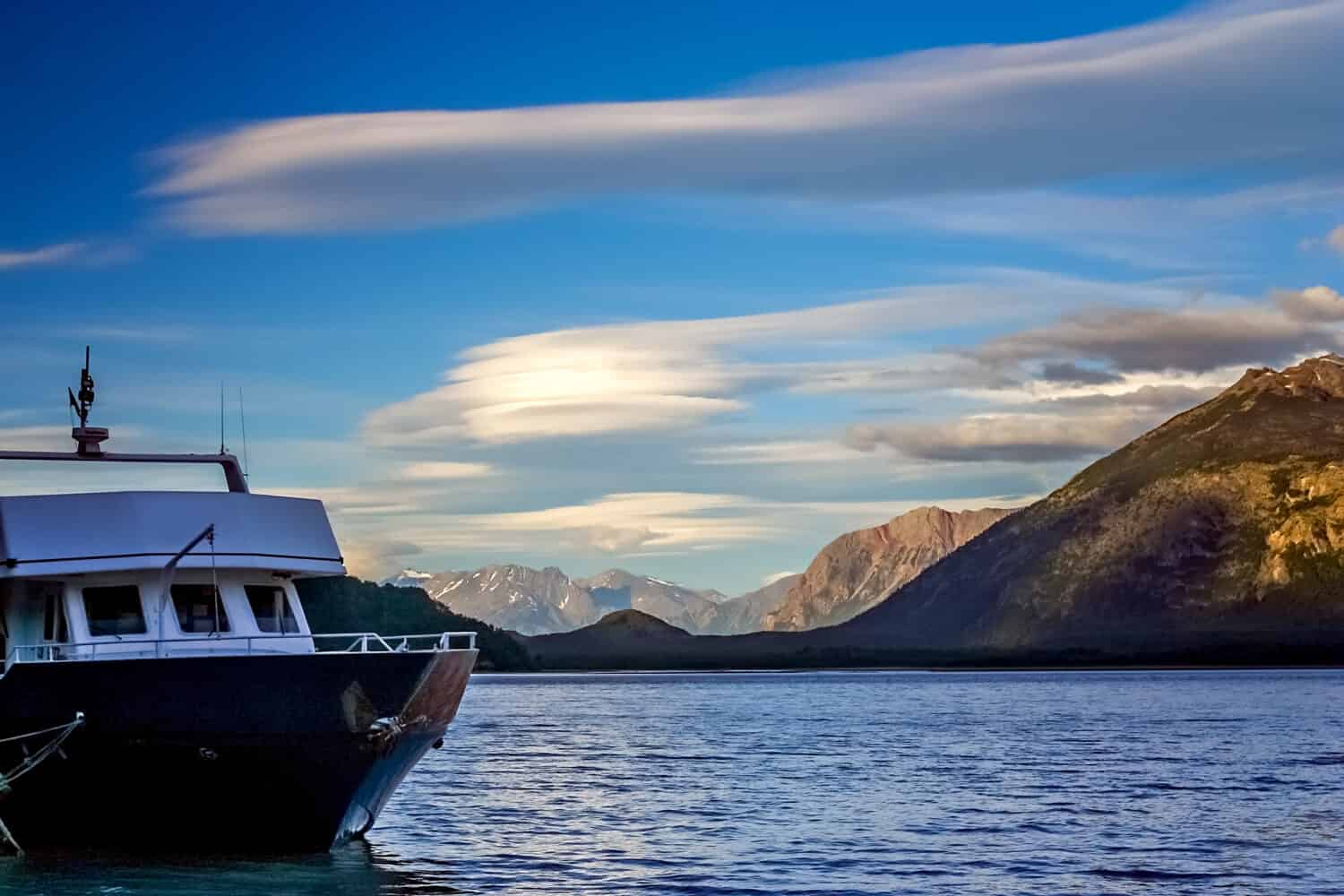Nestled in the remote wilderness of Chilean Patagonia lies a natural wonder – the deepest lake in South America. Spanning the Chile-Argentina border, Lake O’Higgins-San Martín plunges to a maximum depth of 2,742 feet (836 meters). As you stand on the shoreline taking in the incredible scenery, a sense of awe and wonder washes over you. Let’s dive in and explore the mysteries of this remote and rarely-visited lake.

Lake O’Higgins-San Martin is in a remote area.
©mochilaosabatico/Shutterstock.com
A Remote and Rugged Beauty
Getting to Lake O’Higgins-San Martín is no easy feat. The lake sits in a highly remote area, sandwiched between the Southern Patagonian Ice Field and the valleys of Chile’s Bernardo O’Higgins National Park. The nearest road access is 50 miles away, so most visitors arrive via multi-day trekking routes. As you hike through rugged mountain scenery and untouched wilderness, true solitude sets in. Upon reaching the shore, you’ll be rewarded with unbelievable vistas of snow-capped peaks reflected in the crystalline waters. The sense of remoteness adds to the mystique of this unspoiled natural wonder.
Carved by Ancient Glaciers
The lake itself owes its existence to the forces of glaciation. It sits in a classic U-shaped glacial valley with near-vertical cliffs that plunge directly into the deep blue waters. This landscape was carved out by massive glaciers that once covered this area during the last ice age. As the glaciers receded around 12,000 years ago, they gouged out the land, leaving behind the deep lake basin. Remnant glaciers still flow from the Southern Patagonian Ice Field, dumping meltwater and chunks of ice into the chilly waters. Seeing these active glaciers calving into the lake is an unforgettable sight.

A puma is often spotted around Lake O’Higgins.
©Kwadrat/Shutterstock.com
Wildlife Around the Deepest Lake in South America
Despite the harsh alpine environment, the lake has various wildlife. Its cold, nutrient-rich waters are the perfect habitat for rainbow and brown trout, which cruise beneath the surface hunting for insects and smaller fish. Patagonian crested ducks float across the mirror-like water while condors and black-chested eagles soar above.
Around the shoreline, South Andean deer, puma, and guanaco roam the forests and grasslands. If you’re fortunate, you may even spot the rarely-seen huemul, an endangered deer species endemic to this region. Perch along the pebbled banks with a fishing rod, and keep your eyes peeled for wildlife sightings. Also, with over 100 species of birds in the area, opportunities for birdwatching abound.

Experience the gorgeous lake by boat.
©Pav-Pro Photography Ltd/Shutterstock.com
Venture Out By Boat
One of the best ways to experience the lake is by boat. Cutting out across the water, the true vastness of the lake becomes apparent, the distant shores barely visible through the mist. As you cruise across the surface, gaze into the crystal clear depths and imagine what mysteries lurk far below. Float amongst small chunks of ice that have broken off from glaciers upstream. With no roads encircling the lake, boating allows you to reach remote shorelines and secluded bays. Pack a lunch and dine on a peaceful beach accessible only by water. Also, as you sit soaking in the tranquility, the soft lap of waves and cries of circling condors high overhead breaks the silence only.
Kayaking and Camping Adventures
For the ultimate adventure, kayaking and camping allow you to immerse yourself in the grandeur of the lake. Paddle along sheer cliffs adorned with surging waterfalls that feed the lake from hanging glaciers above. Pull ashore on pebble beaches to explore remote coves and inlets. As the sun dips behind the mountains, pitch your tent on the shoreline, anticipating an unforgettable night sky. Gazing up at the dazzling stars reflecting on the glassy waters is an experience like no other. Wake at dawn to birdsong and sunlight sparkling across the lake. Days spent kayaking by day and camping under the stars will create lifelong memories.
Protecting a Pristine Ecosystem
Due to its isolation and challenging access, Lake O’Higgins-San Martín remains pristine with little human impact. When visiting this special place, practice responsible tourism by staying on marked trails, leaving no trace, and packing out all trash. Support foundations working to establish protected areas and national parks surrounding the lake. Although challenging to reach, more accessible roads and infrastructure are planned – let’s encourage sustainable development to ensure this wonder stays unspoiled for future generations.
Conclusion
Lake O’Higgins-San Martín remains one of the planet’s most unspoiled and remote lakes. As you stand reflecting on the shoreline, take in the beauty and let the serenity of this natural wonder wash over your senses. Dreams of sapphire waters, calving glaciers, and valleys lost in time will stick with you long after leaving this magical place. Ready for the adventure of a lifetime? Discover the deepest lake in South America for yourself!
The photo featured at the top of this post is © mochilaosabatico/Shutterstock.com
Thank you for reading! Have some feedback for us? Contact the AZ Animals editorial team.







